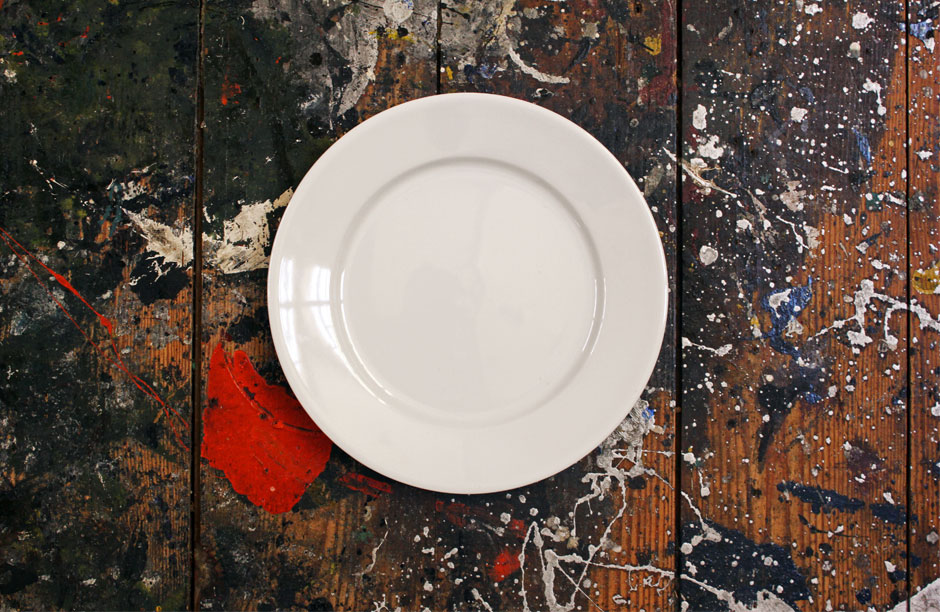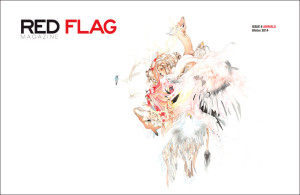One Dish
By Jeff Schwarz

Fifteen years ago, when I was learning how to cook, I moved out to Montauk, New York during the springtime and discovered that landing a job in a seasonal Hampton’s kitchen could be surprisingly easy. The restaurants needed bodies for the upcoming summer crush. Keeping a job, however, was a heroic accomplishment.
I was hired, fired and quit at such a pace that my peers began to call me One-dish. To them, I seemed incapable of cooking more than one dish at a restaurant before moving on. Not a stately nickname, but One-dish did evolve to have two other meanings. One evening off from the kitchen, some of my friends and I gathered for the first time at a local restaurant. Feeling seasonal and curious, we ordered a plate of lamb ribs. They came in a heap, rough cut and dark as jerky. We were young, hungry cooks staring at the unknown – soy sauce marinated lamb ribs with part of the brisket still attached. I remember how we grabbed at them, how we rendered meat from bone and how, through culinary collective awareness, we all came to the same opinion. My friend turned to me and said, “Now, these you should One-dish!”
The next day, I showed up at the restaurant and asked for a job. The chef said they were fine as they were. I shuffled off thinking of the fatty flavor those lamb ribs tattooed on my tongue.
Cut to today and here I am still thinking of those lamb ribs. But I don’t eat them anymore. My relationship to animals has changed.
Jean Anthelme Brillat-Savarin famously said, “Tell me what you eat and I will tell you who you are.” The quote is distilled down food psychology at its finest – inescapably conclusive and also rings true. For the better part of the past 15 years of professional cooking, I have often thought of Brillat-Savarin’s words. I didn’t get hung up on the literal meaning of his quote. What began to resonate with me is the implied message: Before I tell anyone what I eat, I first have to make choices of what I’m eating. And given what I now know about the food industry in America, all choices aren’t created equal.
For the most part, when Americans eat, they are influenced by seven factors: price, convenience, cultural background, health (diet/nutrition), taste, ethics, and environmental concerns. Across the page there is a blank dinner plate. Each of us face that empty plate numerous times a day. Many of us, thankfully, have great say in what we put in our bodies. How we navigate the seven factors that influence our eating habits, whether we like it or not, defines who we are. Nowadays, I pass on lamb ribs because they are particularly fatty and are usually a commodity meat, which means the lamb they come from lived a hormone fueled life on an agri-business farm somewhere before it was unceremoniously slaughtered. Those reasons outweigh my want to taste lamb ribs once again. Those reasons, hopefully, define me as someone that is helping the world more than is hurting it.
But that’s my decision. Everyone gets to make their own choice. Granted, being a mindful food consumer can be difficult. It takes effort to keep up with which fish are endangered. It can be prohibitive to spend up to 50% more for organic goods. Sometimes we just want to eat what we want to eat for our own enjoyment. It’s all ok. So long as an effort is being made to understand what the story is behind what we are eating and what is motivating us to eat it, only good things will follow. Brillat-Savarin’s quote has another implied message. “Tell me what you eat and I will tell you who you are” only defines you for today. Tomorrow is a new day. Who do you want to be?
